Supporting International Cultural Heritage Protection
Monday, 19th February 2024
Trident Manor was selected to provide specialist training to cultural heritage professionals in Kosovo including from the Ministry of Culture. This was the first ever protective security training that any had ever received and the team was proud to support these proactive efforts.
In February 2024, the UK-based security consultancy and training provider Trident Manor was invited to deliver CPD-accredited cultural protection and security risk management training in Pristina by the Kosovo Council for Cultural Heritage. Trident Manor is one of the leading providers specialising in the protection of cultural assets.
Having declared its independence from Serbia 16 years ago the Republic of Kosovo is described as a “young country”. Within its borders remnants of an extensive and diverse history exist, blending Roman, Ottoman, Serbian, and Albanian cultures over the centuries has resulted in the presence of historic buildings, religious sites, and even ancient settlements.
Since independence Kosovo has accelerated the regeneration and rebuilding of its towns, cities, and infrastructure. However, there has been a mixed approach to ownership and regulation of the country’s national heritage and historic sites, many of which were damaged or destroyed during the conflict before independence. More recently historical buildings have been destroyed and new buildings, offices, and hotels put in their place.
The need for a better understanding of the threats faced by cultural heritage was identified by the Kosovo Council for Cultural Heritage and supported by the Ministry of Culture, Youth and Sport. Due to the global delivery of cultural protection services and training an approach was made to Trident Manor seeking support, and the Trident Manor team were delighted to help.
It was identified that the best way of supporting the Kosovan cultural protection efforts would be by providing specialist security training where those engaged in the sector could understand the threats, how attacks happened, and steps that could be taken to reduce the risks being faced. This had to include a basic understanding of risk assessment.
Getting to Know Pristina and the Security Challenges in Cultural Venues
Representatives from Trident Manor arrived in Pristina a day ahead of the training to get an understanding of Kosovan cultural heritage and threats that may exist, including those that occur naturally. It also allowed the team time to speak with the client to contextualise and understand from their perspective the threats that exist.
It was interesting to see that despite the brutalist structures of the Yugoslav communist era, historic mosques, orthodox churches, and statues dedicated to icons of Kosovan nationalism are openly woven into the city and accessible to all. For example, the oldest building in the city, the Çarshi Mosque, is located in the capital’s “old town”, pressed tightly against the edge of the pavement and next to a main road due to the reorganisation of the streets after the urban destruction caused by the Kosovo War.
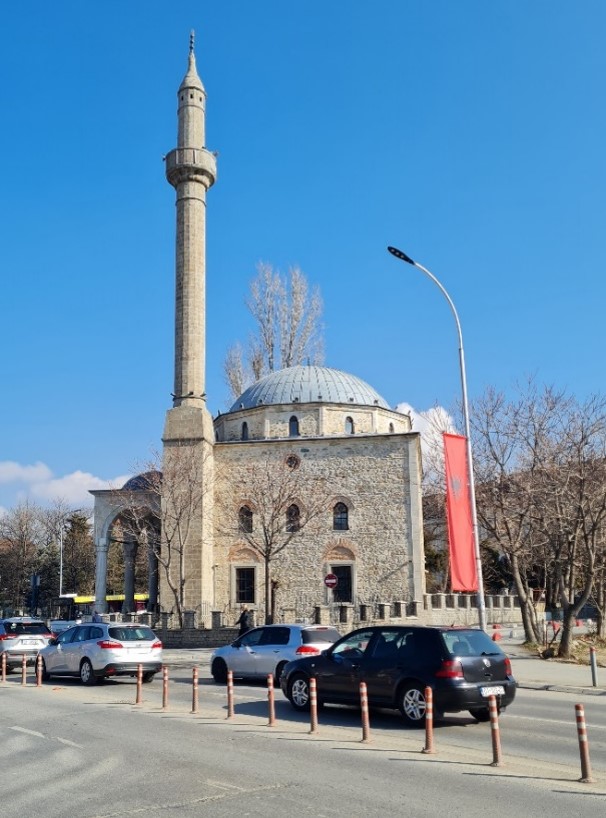
Çarshi Mosque – The oldest building in Pristina
When KFOR (NATO-Kosovo Force) was deployed Pristina was nicknamed “Satellite City” by some owing to the above-average number of satellite dishes on many buildings. A satellite dish sculpture placed in front of the partially built Serbian Orthodox Church of Christ the Saviour, the construction of which was interrupted during the Kosovo War in 1999, pays homage to this element of Pristina’s identity in a uniquely modern and satirical way.
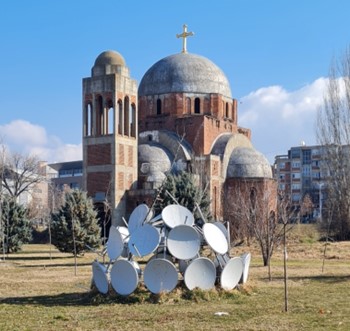
Details alluding to the Albanian and Serbian conflicts of the past and present were visible in the positioning of Albanian, American and British flags hung from lamp posts, the commemoratory statues dotted across busy streets, and the political graffiti on some of the city centre’s buildings.
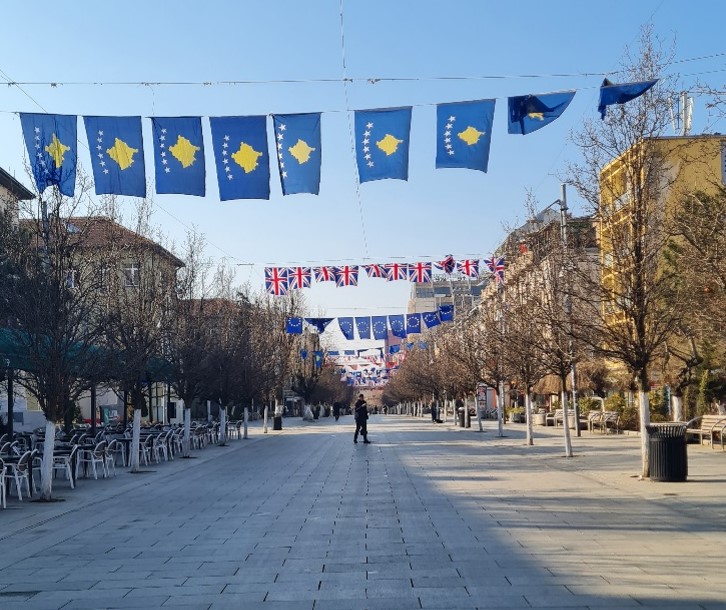
The client identified that there was very little understanding of the best ways to protect their cultural assets and heritage or how security is a business enabler and supports the preservation and protection of national assets. It was agreed that training was probably the most effective way of starting to develop a ‘security culture’ that was inclusive and self-supporting.
It was identified that a lack of resources was one of many security challenges facing the sector in Kosovo, resulting in physical and technical vulnerabilities existing at venues. However, the lack of governance and awareness about the threats and how to manage and mitigate risk played a big part in the ongoing security challenges.
It was agreed by all parties that the two CPD-Accredited specialist cultural protection programmes (“Introduction to the Protection of Cultural Venues” and the ‘Introduction to Risk Assessments at Cultural Venues’) would be the most beneficial ways of enhancing the Kosovan cultural sector’s approach to asset protection. These would provide skills, knowledge, and tools to enable the protection of their assets to be proactively addressed.
Training Delivered on the Protection of Cultural Venues in Kosovo
e training was delivered over 2 days at the Hivzi Sylejmani Library, a hidden gem within Pristina which hosted the former Committee of the Communist Party in the 1940s. The audience included over 30 representatives from a range of organisations involved in the protection of cultural heritage including six Directors from the Ministry of Culture, members of the Kosovo Council for Cultural Heritage, Architects, former diplomats, and other professionals in the cultural sector. This diversity in itself was of great benefit to the training sessions as it allowed different perspectives and experiences to be shared.
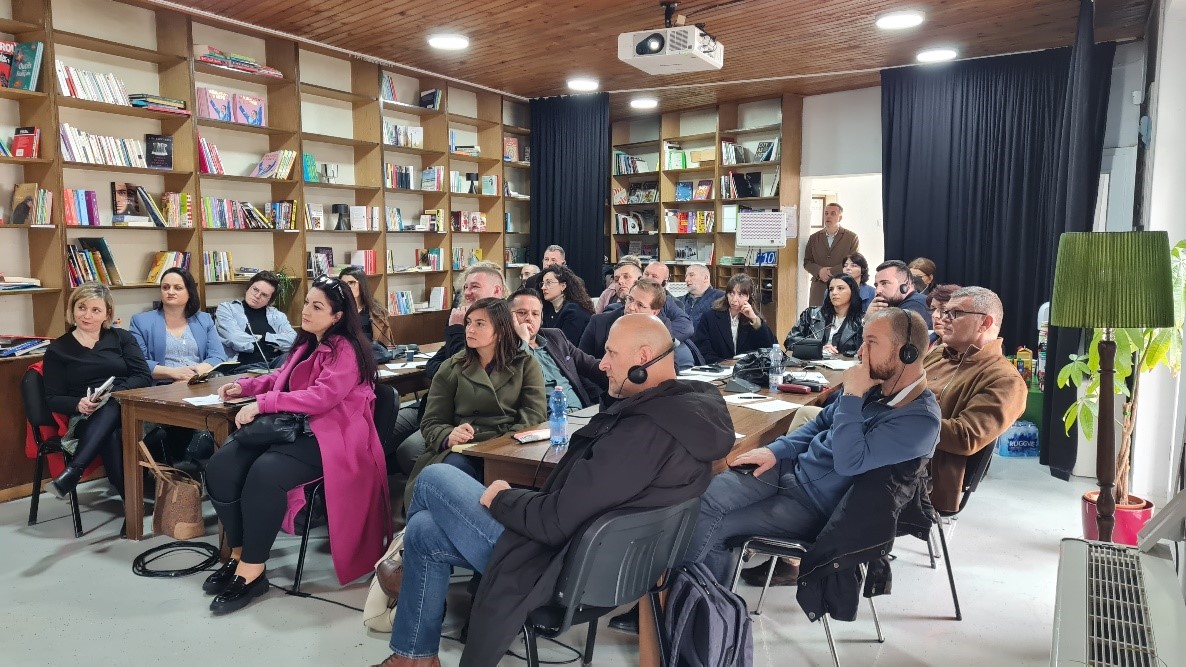
The first day of training was the ‘Introduction to the Protection of Cultural Venues’ which helped the delegates understand a wide range of threats that exist specifically in the cultural sector. Not all threats were adversarial, the threat from natural disasters, earthquakes, flooding, and human errors were all outlined. Other threats such as organised crime, insider threats, and looting were not recognised by the audience.
Once the threats were outlined the adversarial attack process was discussed followed by a review of effective operational practices, which do not differ greatly from operational practices in other sectors:
- Governance
- Patrolling
- Invigilation
- Challenging techniques
- Emergency planning
- Training and education
As well as the theoretical concepts, what was appreciated most was the hands-on role-play session in which attendees played out and witnessed scenarios where conflict might arise in a cultural venue. Attendees were highly aware of the need to be reasonable and proportionate in any protective actions in cultural venues – after all, visitors to these sites don’t expect to see security in action, they hope to learn and experience culture. Nevertheless, the need for situational awareness and proactive prevention was demonstrated by all participants and effective protection methods were highlighted in the process.
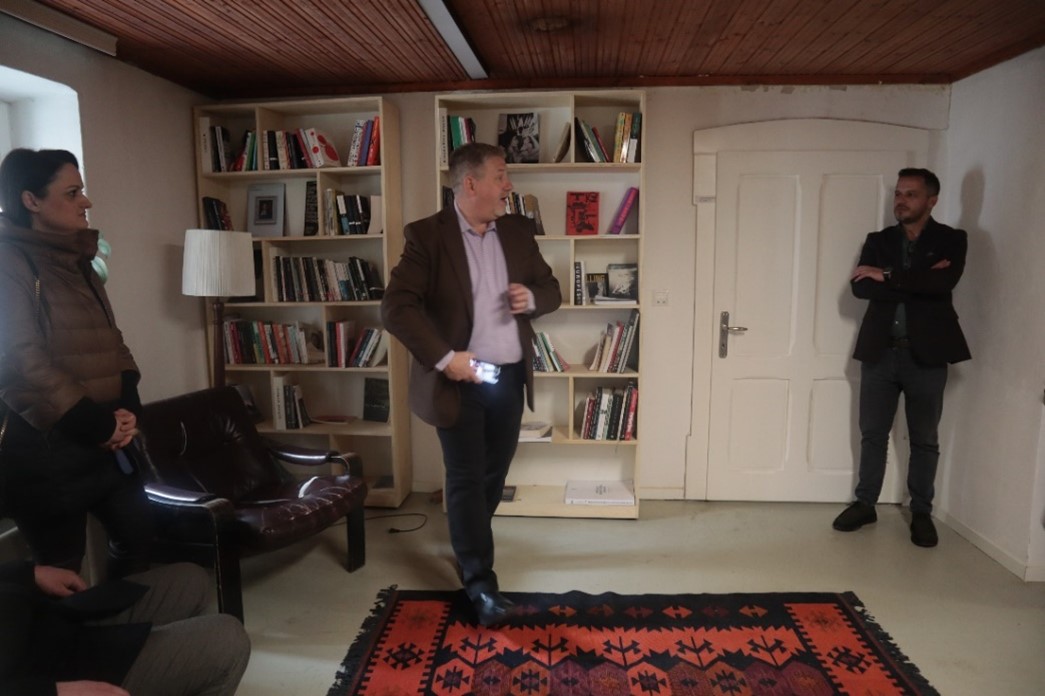
The second day of training introduced the concepts of risk assessing and management to the delegates. Most had previous experience undertaking health and safety risk assessments, but a security risk assessment was a completely new approach and required a different mindset to be adopted.
The training began by defining key elements such as assets, risk and vulnerabilities before discussing tabulated tools that could be easily used by all.
Using a hypothetical case study the delegates undertook a group activity where scores had to be allocated for the likelihood of a threat materialising against the impact (consequences) of it occurring.
Irrespective of where you are in the world this task always brings up differences of opinion based on experiences and subjectivity, hence the reason for recommending the use of tables and agreed definitions. This was valuable in helping delegates understand why priorities may differ between individuals and organisations, and the importance of dedicating time to agree on risk appetite and tolerance levels before starting the assessment process.
The delegates were allowed to undertake a risk assessment of the Hivzi Sylejmani Library looking for vulnerabilities and considering ways in which they could reduce the risks that existed.
One of the sessions asked the delegates to view the building from a different perspective and “Think Like a Criminal” to recognise potential vulnerabilities at the venue, before “Thinking like a Defender” and considering ways they could protect the assets within.
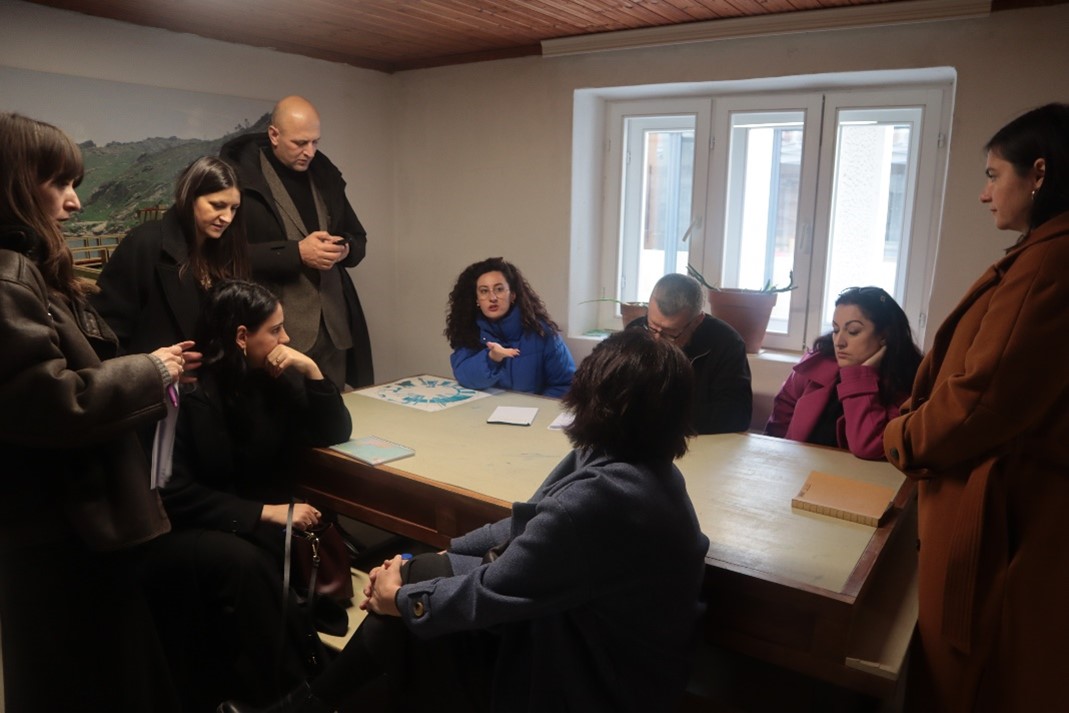
Conclusion
After two days of training, all we could hope for was an increased level of understanding of the threats, greater consideration of effective operational practises, and an ability to undertake a basic security risk assessment.
It is felt that this was achieved and that all the delegates had benefited from the content, activities, and shared experiences. The feedback was great, and it was lovely to hear that the Secretary (of State) for Culture, Youth and Sport had telephoned the coordinator from the Kosovan Council for Cultural Heritage thanking him personally for the delivery of such beneficial training.
From a training delivery point of view, it was so rewarding to see such a young country that is still rebuilding proactively seek to protect its cultural heritage and recognise that it needed help, which we were only too glad to provide.
This was a particularly beneficial visit for recent recruit Hannah Miller who, as a Young Security Professional, was thrilled to see the eagerness for this new nation to progress its security culture in heritage sites and their enthusiastic approach to training.
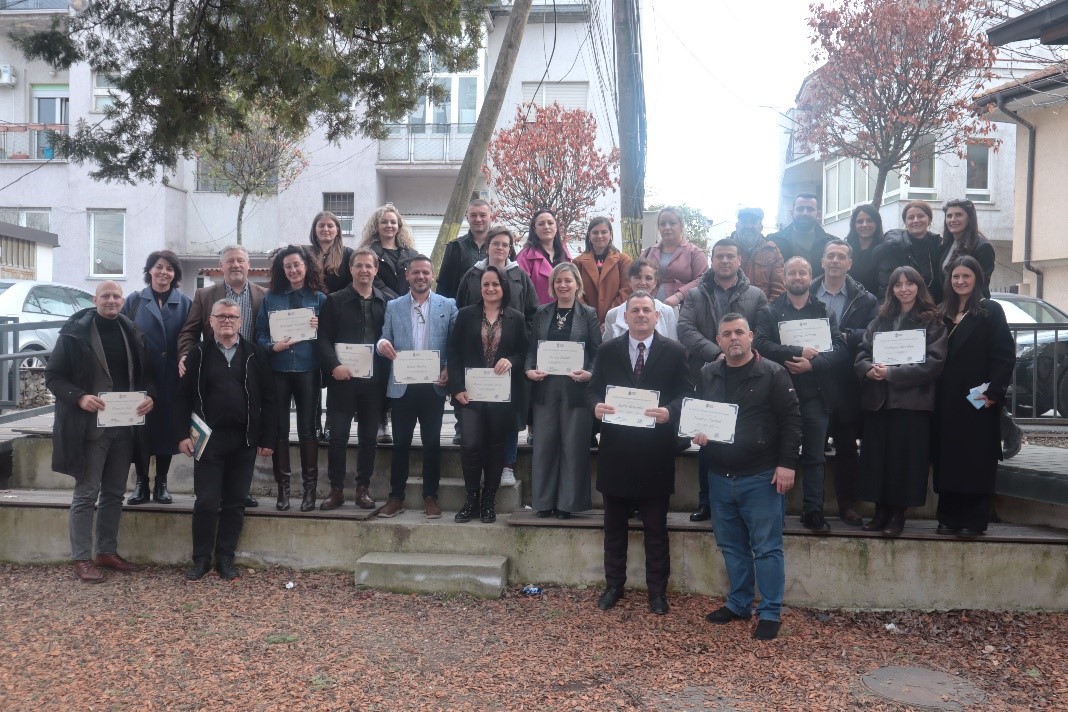
The whole team was inspired by how dedicated the client and attendees were to the protection of what is left of the country’s national heritage post-conflict, and we are honoured to help increase the protective resilience of the cultural sector. We look forward to supporting their efforts in the future.
